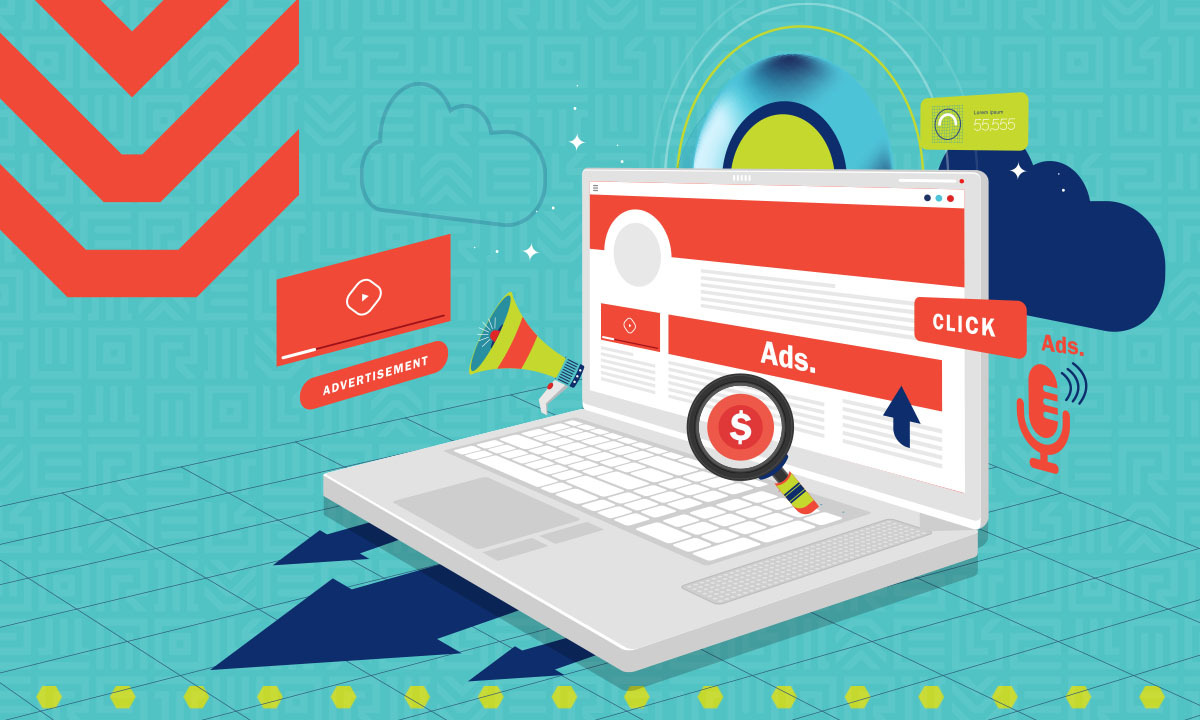
An investment in paid media can increase your brand’s exposure and help you reach your target audience more effectively. But you may have questions about navigating the ever-evolving paid media landscape.
Staying ahead of the curve with the most current paid media trends can help shape your go-to-market strategy now and into 2024. Learn more about four paid media trends we’re tracking.
Connected TV
One of the biggest growth areas in paid media, connected TV (CTV) refers to the devices on which audiences access video content. These include gaming consoles, streaming devices, and smart TVs. When video content is delivered this way rather than through a cable or satellite connection, it’s referred to as “over the top” (OTT). Examples of OTT streaming services are Hulu, Netflix, and Peacock. OTT content can be viewed on mobile, desktop, or connected devices.
Over half of American adults view TV content through internet-connected devices, and 87% of U.S. TV households had at least one internet-connected TV device in 2022, including smart TVs and streaming devices. CTV viewership among Gen Z is expected to approach 55 million viewers by next year, and eMarketer projects the compound annual growth rate of CTV advertising to exceed 20% from 2020 to 2025 — more than all other advertising segments.
This medium is more cost-effective than linear TV, and it creates strong brand recall, an advantage for B2B marketers with a longer sales cycle. CTV ad length varies by platform, but video ads are primarily 15, 30, or 60 seconds. Some platforms will also run 6- or 45-second ads.
Here are some tips to keep in mind when using CTV for B2B marketing:
Target your audiences. For example, you could launch one campaign that targets based on job title and another that targets based on geography, industry, or type of organization.
Utilize retargeting based on first-party data acquired from website visitors or form fills. You can also use existing customers from your CRM matched with a CTV adtech partner.
Buy ads programmatically. CTV ads can be bought directly or programmatically. The benefits of buying direct include fixed prices that can be pre-negotiated and the ability to specify where the ads run. The benefits of programmatic buying include real-time bidding and measurement and increased targeting capabilities. We recommend buying programmatically, as this is more cost-effective and can help you reach a wider audience.
Primary key performance indicators (KPIs) that can be measured with CTV ads include impressions, video views, video completion rate, and cost per completed view.
Programmatic Digital Audio
Programmatic audio, another rising medium, is an ad format designed for placement within audio content such as podcasts, digital radio, and music-streaming platforms. Digital audio ads have a 24% higher recall rate than traditional display ads, according to Nielsen Media Lab. Also, 3D audio ads provide an immersive listening experience that mimics how humans perceive sound in the real world.
As reported by eMarketer, U.S. adults in 2022 spent more time daily listening to digital audio (1 hour and 40 minutes) than they did watching subscription video services (1:27) or using social media networks (1:15). Some other highlights about digital audio’s growth:
273 million Spotify users and 44.2 million Pandora listeners opt in for ad-supported subscriptions.
74% of U.S. adults were among the digital audio listenership in 2022.
2022 was the year of the podcast, with listenership in the U.S. growing by 20%.
Digital audio ads are typically non-skippable 15- or 30-second spots. An optional display banner for users to click through is shown while the audio ad plays. Buying digital audio directly through top audio streaming platforms is expensive, but buying through a programmatic partner reduces cost and allows ads to be served on multiple platforms.
Benefits of programmatic audio for B2B marketing include the growing usage and engagement on audio platforms, high reach through disruptive advertising, precise audience-targeting capabilities, and real-time measurement. KPIs that can be measured with this medium include impressions, average listen rate, and frequency.
High-Impact, Rich Media Ads
These digital ads harness the power of rich media to encourage more meaningful engagement. They use the latest creative technology to maximize their canvases and create immersive experiences that help you break through the clutter. A standard display ad has an image and text only, with no dynamic ability to expand or move. A rich media ad can use video, audio, animations, and expansion functionality to offer high audience interactivity. Scalable formats adapt to the surrounding content, screen size, and user actions.
Ad spend on rich media is projected to double by 2026, according to eMarketer. Benefits of rich media ads include:
28% increase in spontaneous recall
78% more likely to lead a customer to learn more about a brand or product compared to a standard display ad
Up to four times the view duration compared to standard display units
Another bonus: The technology behind rich media allows you to track various levels of interaction beyond click-through rates, such as expansions, hovers, clicks, taps, watch times, and video completions.
Dynamic Ad Creative
Dynamic ad creative leverages real-time data to produce personalized ads, ensuring that each user is presented with the most relevant and compelling content. These ads use data such as user demographics, interests, behavior, and browsing history to inform the creative. They can be used across a variety of channels, including search, social media, display, email marketing, and programmatic.
Dynamic ad creative allows you to:
Reach a wider audience with more relevant ads
Increase engagement and conversions
Improve your return on ad spend
Automate ad creation and management
Test different ad creatives and identify the best-performing options
Content and format can vary based on your campaign goals and target audience. Options include text ads, image ads, video ads, display ads, and native ads. Each can automatically tailor the copy, images, and content based on viewer data and other criteria.
When measuring the success of your dynamic ad creative campaigns, be sure to compare your results to industry benchmarks to determine campaign success. It’s important to track the performance of the overall campaign as well as each ad creative variation, channel, and target audience. You can measure several KPIs, including click-through rate, engagement metrics, conversion rate, and cost per acquisition.
Put Paid Media to Work
Our media team can help you monitor and adapt to paid media trends and develop a strategy to put these methods to work for you. Ready to get started? Connect with us today.


 By Two Rivers Marketing
By Two Rivers Marketing By Patrick McGill
By Patrick McGill